The sighting of the new moon is a particular subject in astronomy that has fascinated many observers since prehistory. Evidence of early human civilizations using the moon as a basis to measure time in the form of an actual lunar calendar has been discovered in the ancient plains of Scotland, dating back to 8,000 B.C. Professor Samuel L. Macey of the International Society for the Study of Time in his book, Encyclopedia of Time, says that using the moon to measure the passage of seasons was evident as far back as 28,000-30,000 thousand years. Therefore, the method by which we measure the beginning, and the end of the new moon phase is indeed a crucial part of determining the accuracy of any lunar calendar.
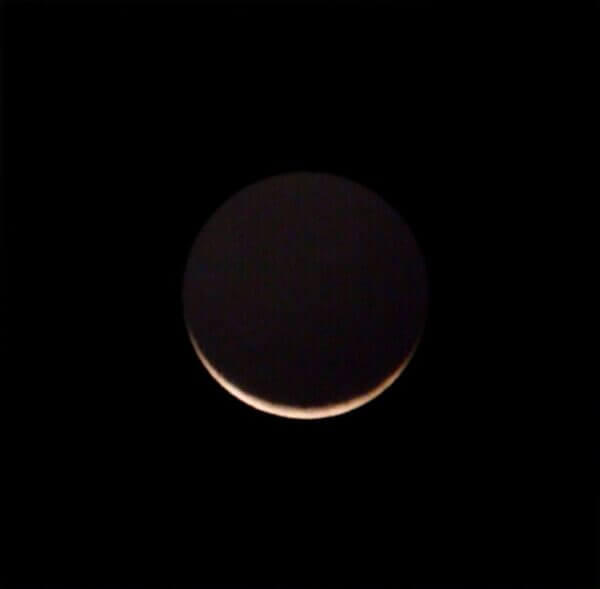
Since the Islamic months follow a lunar calendar, the start of each month is marked by the first sighting of the crescent moon. It is important to note however, that the Islamic new moon is actually different to the “astronomical new moon”. We define the astronomical new moon as that point when it is in conjunction with the sun, and thus it is actually too close to the sun and is very dark, for most of the lunar disc is in shadow. This point marks the beginning of measurement for the true age of the moon.
We define the Islamic new moon to be that point where we can first spy a very thin crescent. It is during that evening when we can say that a new Islamic month begins, and that the next day would be considered the first day of the new Islamic month. The spotting of this crescent is not just a sole physical task that is judged by approximations—there are still very specific astronomical considerations that aid in the locating and spotting of this nearly-invisible crescent. As expressed by renowned and respected Arab astronomer Muhammad Odeh, “Based on crescent sightings, we start Ramadan, we start Eid. So these astronomical issues are very important in our community, and our objective is to do important work that benefits our community.”
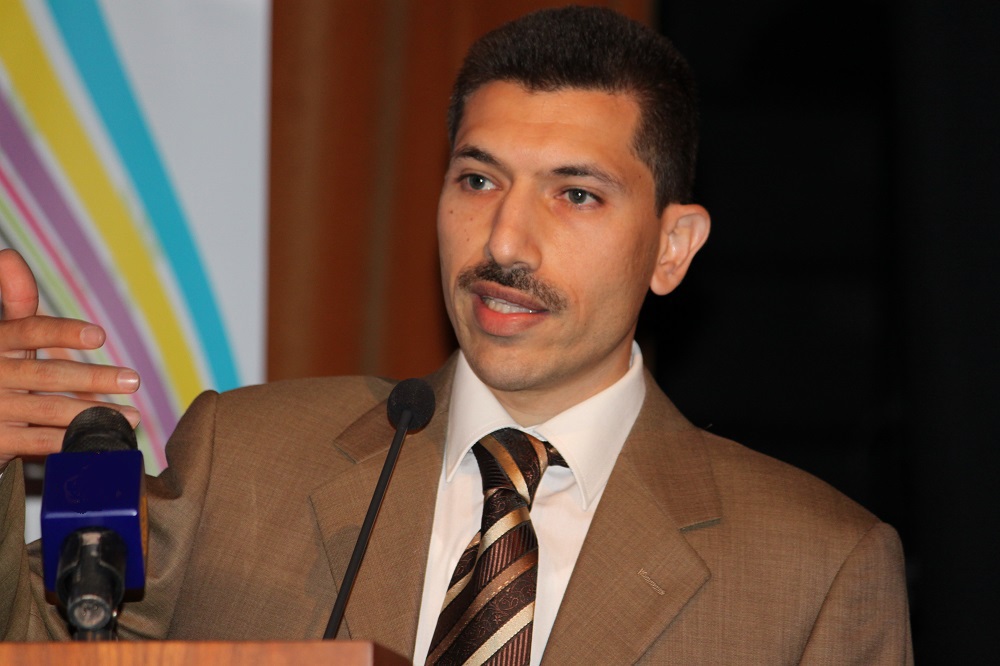
The oldest criterion we know of hails from the ancient land of Babylon. It states that the crescent is visible to the naked eye if at the moment of observation, the angular separation (angle between the moon and the sun) exceeds 12 degrees. This criterion was adopted through the ages by various peoples for whom the moon was the basis of the calendar, whether for religious or civil purposes. In later centuries, Muslim astronomers, including the great Al-Battani, Al-Farghani, Al-Biruni, and Al-Tusi, approached the problem in similar fashion. They obtained limiting values between 9.5 and 12 degrees.
In more recent times, French astronomer André-Louis Danjon proposed of a limit at which the smallest angular separation (center to center) between Sun and Moon at which a lunar crescent can be seen. This value is about 7° based on the crescent observations available to him in the early 1930’s. This value is now known as the Danjon Limit. Thus we can therefore say, that is near-impossible to detect the thinnest crescent if it’s only a few hours old from the point of astronomical new moon. One has to wait perhaps 24 or even 48 hours, to be totally sure of a sighting. This means that the moon would perhaps have over 25 to 40 degrees angular separation from the sun, assuring a well-enough bright thin crescent.
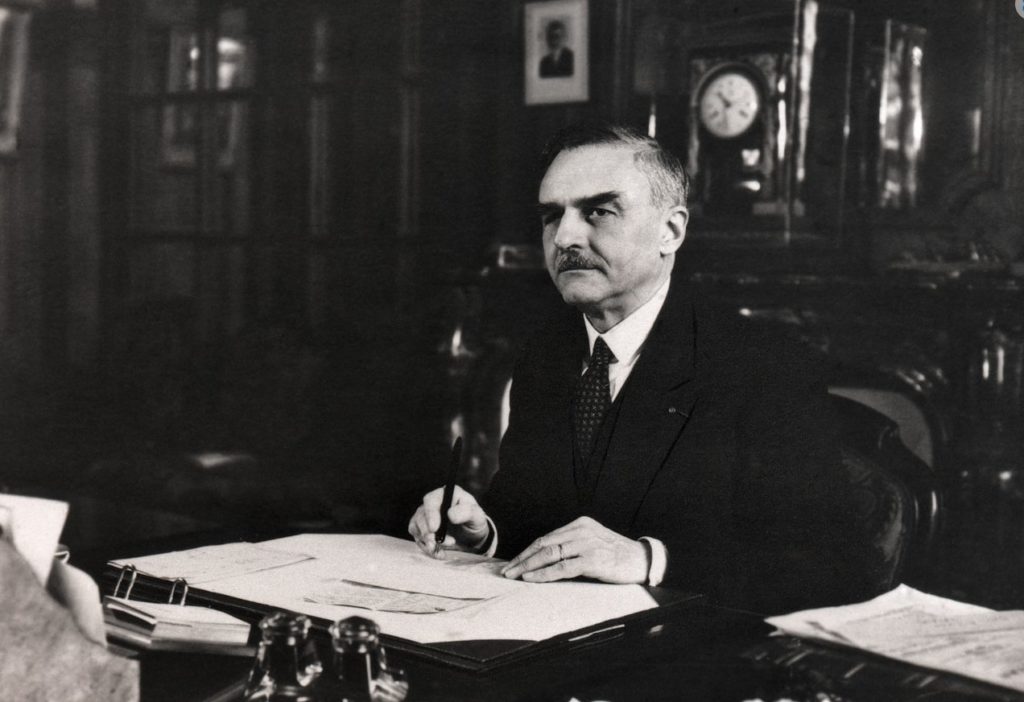
Pakistani astronomer Talha Moon Zia, who studies at the Institute of Space & Planetary Astrophysics (ISPA), at the University of Karachi utilizes a refractor telescope on a manual alt-az mount with a primary lens of 3.54 inch or 90 mm and a focal length of 910 mm. When using a 25 mm eye piece he has a magnification power of 36 times, which he says is suitable for such sightings. In order to assure the accuracy of his sighting, he uses various planetarium software and star chart apps in a mobile phone to locate the position of moon in the sky roughly 15-20 minutes before sunset. He also uses the position of the sun as a reference point to find position of moon. At the moment the sun sets, he then uses “Sky Safari Pro 5” app to get the moon’s accurate position in the sky, and if there’s is a bright star or a planet next to the moon that day, he uses it as a guide to “hop” to moon.
Astronomer Hazarry Ali Ahmad of the Astronomical Society of Brunei Darussalam explains that young moon is extremely challenging to see with the naked eye as the physical appearance of the crescent is super thin, just with a “hair line” thickness as seen through a telescope. Another challenge is that the illuminated fraction on the moon is exceedingly small and one usually gets blinded by the setting sun if it’s not yet twilight. He says that he utilizes naked eye sighting as well as optical aids (such as telescopes and binoculars), but with evolving technology, new moon observation is also done with the help of photography using cameras and CCD imaging.
Filipino amateur astronomer Abdur Rahman Alindao, a science educator from Islamic Studies, Call, and Guidance School (ISCAG Philippines) lives in a muslim community in Manila, where they have a mosque where he conducts his astronomical observation. He sets up his equipment on the roofdeck or minaret, utilizing either a pair of 10×50 binoculars or a 130mm reflector telescope.
Aside from the accuracy of locating the position of the thin crescent moon, there is of course, the usual threat of uncooperative weather during the evening of spotting, and the angle of the moon from the sun that might place it in a position too close to the horizon, thereby blocked by objects observed there. In Pakistan, Zia states that it’s difficult during summer months when sky is cloudy due to the monsoon season. It also happens when thin crescent appears to be very low near horizon (below 9 degrees at sunset) and either buildings or thick layer of dust obscure his views. During summer months observing conditions becomes awful due to high relative humidity that makes sighting of thin crescent nearly impossible.
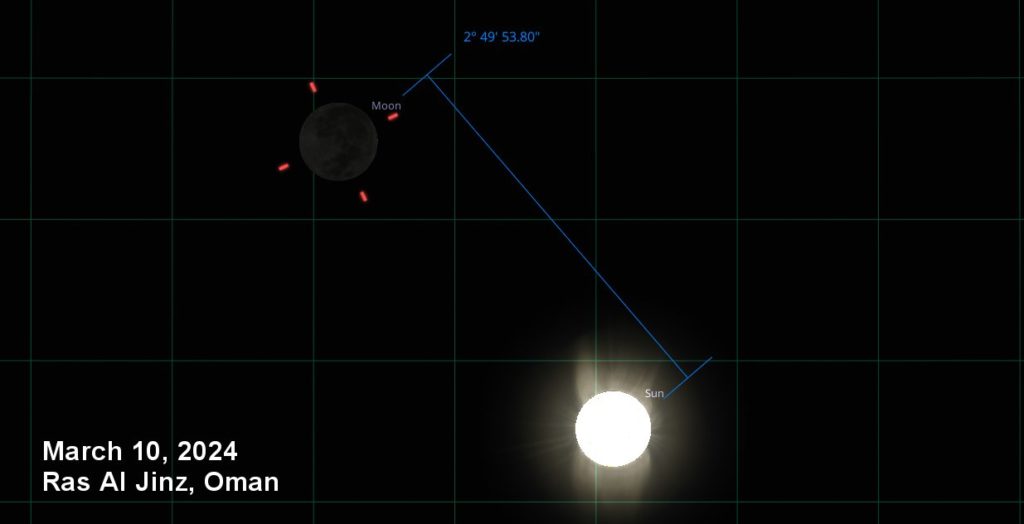
Hazzary adds that the climate in Brunei is tropical and humid with heavy rainfall almost all year round. This weather affects the seeing of the crescent—it’s mostly cloudy during the Moon sighting that always hinder the observation, but is continued as there is always a chance for the moon to appear between gaps in the clouds. Thus the use of technology to achieve a successful sighting through the use of electronic telescope mounts are installed with computers that have an automatic GOTO feature to point the instrument to the precise position of the astronomical object in the sky. This has greatly assisted new moon observers to align and track the telescope correctly to the Moon.
There have been exponential development of young moon crescent visibility studies/literature made to improve the prediction of the new moon crescent. Some famous contributors in the related research are B. D. Yallop who proposed the ‘best time’ for the first visibility and Khalid Shaukat who proposed the ‘topocentric altitude’ and ‘width of crescent’ criterion.
Apps include MoonCalc by Dr. Monzur Ahmed and Accurate Times by Mohammad Odeh (https://accurate-times.software.informer.com/download/). These software can generate calculations for Sun and Moon ephemeris based on your location as well as showing the possibility of seeing the moon crescent. There is also online application developed by University UNIZA available for regional purpose to compute the location of the new moon via Moon Calculator (MoonCalc) (moonsighting.org.uk)
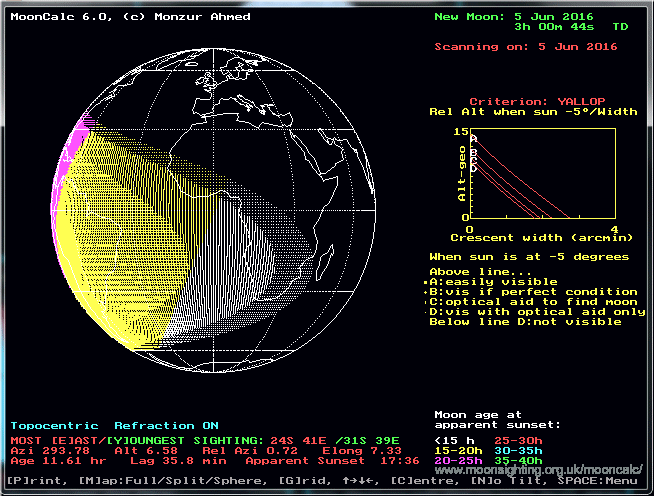
Oman’s criteria in entering the Hijri months is to observe the crescent (with the naked eye or telescopes) both mathematically and practically. That is, if the possibility of seeing the crescent is proven mathematically, astronomy is used to support the astronomical observation and reports, while in the case of negation (the impossibility), astronomy is taken without the need for practical sighting. Oman has an entrepreneurial step and well established in entering the Hijri month by enhancing the astronomical sector. The Ministry of Endowments and Religious Affairs represented by the Astronomical Affairs Department has a significant role in implementing the astronomical and scientific projects related to astronomical observation generally and moon sighting specifically.
Despite all the published notes and research on this subject matter, the best way to understand the difficulties and challenges owing to the precision demanded by observation of the thinnest crescent moon, is to do it yourself. If you consider yourself to be more than just an average observer, taking up the challenge to do thin crescent observing is a very interesting and worthy pursuit. As the holy month of Ramadhan approaches, now is the best time to consider investing in a good telescope to undertake this intriguing challenge.
/rmherrera